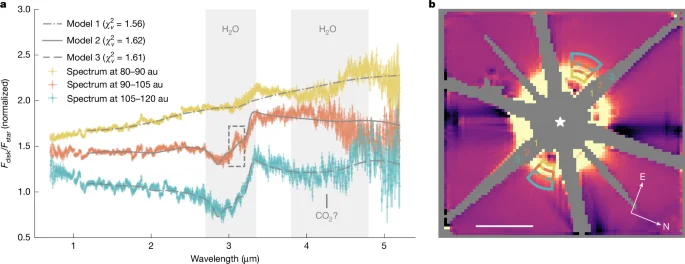
JWST Uncovers Icy Disk Around Distant Star, Revolutionizing Exoplanet Formation Theories
In a groundbreaking discovery, NASA's James Webb Space Telescope (JWST) has detected a significant reservoir of crystalline water ice within the debris disk surrounding the young, Sun-like star HD 181327. This finding, revealed on May 14, 2025, marks the first time water ice has been directly observed in the Kuiper Belt equivalent of another star system, shedding new light on the origins of planets and the potential for water delivery to fledgling worlds.

HD 181327, located 155.6 light-years away and estimated to be only 18.5 million years old, presents a unique opportunity to study planetary system formation in its early stages. Unlike our own solar system, where the major planetary formation is long complete, HD 181327's debris disk offers a glimpse into the processes that once shaped our cosmic neighborhood. The icy disk is teeming with comets, dwarf planets, and countless water-ice particles, remnants of a protoplanetary disk that could have eventually birthed planets.
Analyzing detailed spectra from JWST's Near-Infrared Spectrometer (NIRSpec), astronomers pinpointed the signature of water ice at a wavelength of 3 microns, with a distinct Fresnel peak at 3.1 microns. This peak suggests that the ice particles are around millimeter in size, akin to those found in Saturn's rings. According to Chen Xie of Johns Hopkins University, this discovery establishes a "water-ice reservoir" capable of influencing planet formation.
The implications of this discovery are profound. Water ice plays a crucial role in the formation of gas giants and, ultimately, the delivery of water to terrestrial planets like Earth. In our solar system, comets originating from the Kuiper Belt and Oort Cloud are believed to be major contributors to Earth's oceans. Similarly, the presence of water ice in HD 181327's debris disk hints at the possibility of water being delivered to any planets that may form in its vicinity because this could occur through asteroids and/or comets that formed beyond a critical boundary known as the snow line.
While comparisons to our own Kuiper Belt are tempting, Xie cautions against drawing overly literal parallels due to gaps in our knowledge. The inner edge of HD 181327's debris disk, for example, is being eroded by the star's ultraviolet light, but the water ice persists, suggesting a replenishment mechanism. This replenishment likely occurs through collisions between icy bodies, which eject more dust and ice grains into space. This constant bombardment also releases other volatile compounds like carbon monoxide and potentially carbon dioxide, detected by the Atacama Large Millimeter/submillimeter Array (ALMA) and JWST, respectively.
The James Webb Space Telescope's ability to detect water ice in exoplanetary systems opens a new era of exploration. As Xie and his team continue to analyze data from other systems observed with JWST, more discoveries are on the horizon. This groundbreaking research promises to reshape our understanding of planet formation and the distribution of water throughout the universe.
What does this discovery mean for the search for habitable exoplanets? Share your thoughts and predictions in the comments below!